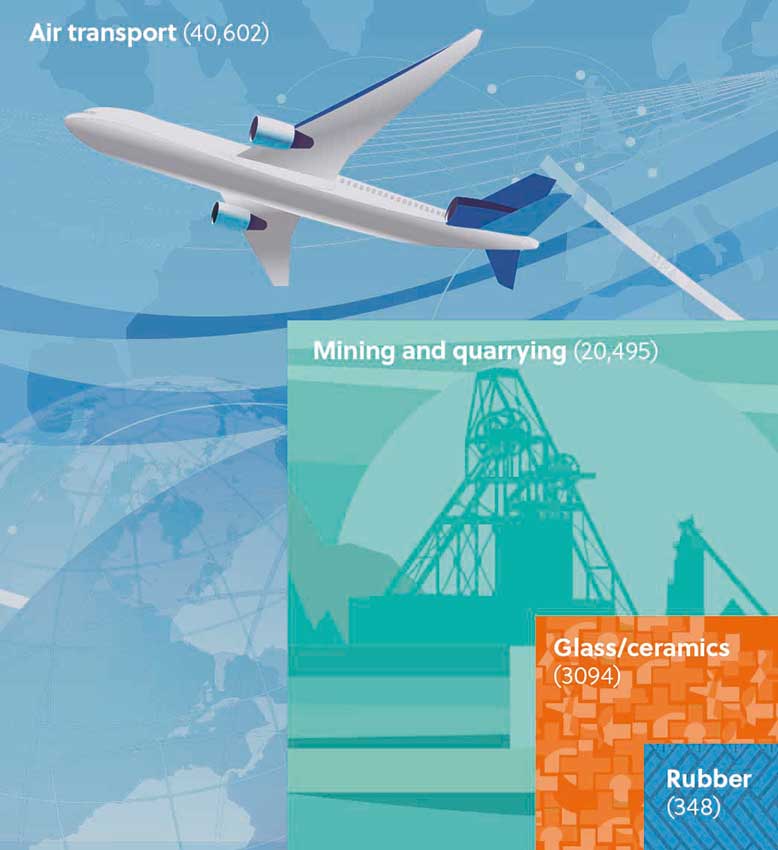- OT
- Science and vision
- Research
- The carbon question
The carbon question
OT explores what a carbon footprint is and how it might apply to the optical sector

02 November 2017
A carbon footprint is one of the key measures that individuals and organisations look to when attempting to judge the effect of their actions on the environment.
But what exactly is a carbon footprint? And where does the optical sector sit in terms of its impact?
University of Leeds Professor of Energy and Climate Policy, John Barrett, helped to devise the UK Government standards on how to measure carbon footprints.
He explained that a carbon footprint measures what the total impact of a country, business or person is, taking into account all of their activities.
“That combines both the energy that you would use in your house, or for a business, on-site, and every impact that happens in the supply chain providing you with the products that you consume,” he shared.
Impact of optics
When asked for the industries with the largest carbon footprints, Professor Barrett identifies the aeronautic, car and steel industries as sectors with high emissions.
The overall carbon footprint of the optical industry is likely to be further down the list, Professor Barrett emphasised.
“If you were to look at the total carbon dioxide emissions of the country, the making of spectacles would not appear as a high impact item. However, if you think of the impact per pair of glasses, that potentially could be reasonable because these are products that are fairly energy intensive to produce,” he shared.
A pressing concern
Professor Barrett outlined how there is a need to reduce carbon dioxide emissions globally to avoid some of the most significant consequences of climate change.
The social and economic effects of climate change will affect developing countries the most, Professor Barrett highlighted.
“Individuals producing high levels of emissions in developed countries are transferring impacts to developing countries. That for me is an issue of social justice and why I think this is important,” he added.
Carbon footprints convey the idea that individuals, governments and companies do not act in isolation, Professor Barrett observed.
All of the decisions that people make have consequences, he highlighted.
“It isn’t just about the energy that we might use, but thinking about where we spend, what we decide to design or produce and the reach that we have in the way that we operate,” he elaborated.
“It gives us a broader perspective to recognise that while everyone may be part of the problem they also have an opportunity to contribute to the solution,” Professor Barrett added.
This is a challenge that many companies and sectors are now picking up. Professor Barrett observed that previously businesses would often have to pay costly consultants for this type of analysis.
However, the UK Government has now developed a standardised spreadsheet for companies to estimate the scale of their carbon footprint and judge where the main impacts lie.
“That process alone can start a discussion about where the opportunities sit,” Professor Barrett shared.
"Individuals producing high levels of emissions in developed countries are transferring impacts to developing countries. That for me is an issue of social justice and why I think this is important"
Benefits for business
While individuals can take steps to reduce their own personal carbon footprint, Professor Barrett points out that there are important opportunities on a larger scale.
Governments have a responsibility to regulate carbon emissions and set standards, while businesses should strive to achieve these standards in the best way they can, he shared.
“I think there are options for smaller businesses to think about this in a fairly cost-effective way. Many of the measures for reducing a carbon footprint have identified opportunities for cost savings. If we use resources more efficiently there is a dual benefit of not requiring so many,” Professor Barrett observed.

Treading lightly
How a climate policy academic reduces his carbon footprint
Professor Barrett, who has worn glasses since the age of 11, takes meticulous care of his spectacles.
He tells OT that he values durability in products.
“Creating something that lasts is a key focus,” he shared with OT.
Professor Barrett lives in a four-bedroom house in York with his family, who all follow a vegetarian diet. When he makes purchasing decisions, he prefers quality over quantity.
“I’m a firm believer that you can still have a very high quality of life on a low carbon footprint,” he added.
Professor Barrett’s house is highly insulated, fitted with triple glazing and has solar panels that produce around half of the household energy supply.
The family’s monthly gas bill is around £20 while they spend £15 each month for electricity – which Professor Barrett estimates is 60-70% less than average energy costs for a similar-sized house.
He cycles the mile from his house to the train station in the city centre and walks to work from the station at the other end.
The family do not travel by plane. Instead, he travelled by train to northern Spain over the summer with his wife and 11-year-old twins.
Illustration: Neil Webb
Advertisement

